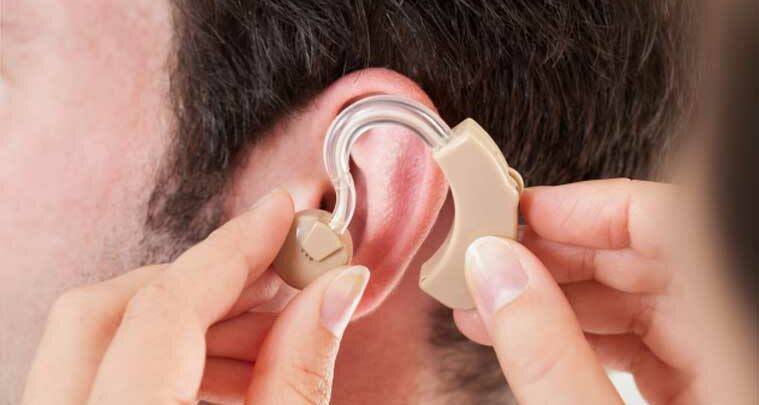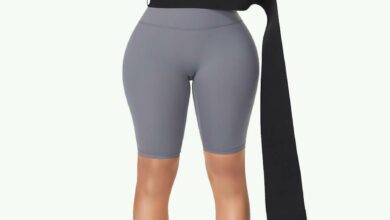Health and Medical
What Things Should Be Kept In Mind Before Buying Hearing Aids?

You can’t get normal hearing back with hearing aids. They are only able to improve your hearing if you have difficulty hearing certain sounds. Almost all hearing aids amplify sounds from the environment by carrying the sound into your ear and amplifying it. Most hearing aid specialist Mumbai is digital, and they use either a traditional hearing aid battery or a rechargeable battery. Sound is collected from the environment by small microphones. A computer chip with an amplifier turns the sound into digital code, which is analyzed and adjusted based on each individual’s hearing loss, hearing requirements, and the volume of ambient sounds.
Speakers, sometimes called receivers, deliver the amplified signals back to your ears as sound waves. There are many differences among hearing aids, such as their price, size, features, and positioning inside the ear.Designed to be less noticeable, hearing aid manufacturers continue to make smaller hearing aids. However, these smaller devices might not provide you with the improved hearing you would expect.
Common hearing aid styles:
- Completely in the canal: Adults suffering from mild to moderate hearing loss can benefit from a completely-in-the-canal hearing aid, which fits nicely inside the ear canal.This model is powered by very small batteries that have a short life span and are difficult to handle. It also lacks features like volume control and a directional mic. The speaker can get clogged by earwax.
- In the canal: Hearing aids designed for partial fitting in the ear canal are sometimes referred to as in-the-canal hearing aids. This style can correct mild to moderate levels of hearing loss in adults. The smaller size makes it less visible in the ear. It includes features that won’t connect to fully-in-the-canal aids but may be difficult to adjust due to its small size. It is susceptible to earwax clogging the speaker.
- In the ear: Those with mild to severe hearing loss can choose between two types of in-the-ear hearing aids – one that fills most of the bowl-shaped portion of the outer ear, and one that fills only the bottom portion. Both are customized and available with directional microphones. Uses a larger battery for longer battery life and offers several options for rechargeable batteries. Does not fit on smaller style hearing aids, such as a volume control. Can be more difficult to handle. Can be susceptible to earwax blocking the speaker.
- Open fit: A hearing aid that fits behind the ear is referred to as an open-fit hearing aid, whereas a hearing aid that fits in the ear is called a behind-the-ear hearing aid. A very open canal allows for low-frequency sounds to enter the ear without being amplified or distorted by the hearing aid, making this style an ideal choice for those with better low-frequency hearing and mild to moderate high-frequency hearing.
Tips to choose hearing aids:
- Get reference from a reputable audiologist: Have your hearing checked by an audiologist to rule out earwax or infection as a cause of hearing loss. Check with your doctor for other causes of hearing loss. A good audiologist can be found through your doctor if you don’t know one. When you have hearing loss in both ears, you will have the best results with two hearing aids if you have hearing loss in both ears. The audiologist will assess your hearing, help you choose the most appropriate hearing aid, and adjust it to meet your needs.
- Take a trial to be sure: If you’re considering getting a hearing aid, you’ll usually be offered a trial period during which you’ll get used to the device and determine if it’s right for you. If the hearing aid is returned during the trial period, ask the dispenser to put in writing the amount of the trial, whether this will be credited to the final cost of hearing aids, and how much will be refunded. Make sure the hearing aid you’ve chosen has the capability of being upgraded so that it will still be useful in the future if your hearing loss progresses. Although hearing aids don’t operate indefinitely, they should last at least five years.
- Specify your future needs beforehand: Check that the hearing aid is covered by a warranty that includes both parts and labour. Some hearing aid providers may include appointments or professional services in the warranty. Adverts and dispensers that claim otherwise may lie about the ability of hearing aids to correct normal hearing or to eliminate all background noise. Talk to your audiologist about your expectations and needs before purchasing hearing aids. Professional fees, remote controls, and accessories can be costly. If you’re serious about getting the best results from your new hearing aids, you’ll need to put some effort into the process. Your hearing healthcare professional will go to great lengths to make sure you succeed. Your provider can make the proper adjustments to your hearing aids if you are engaged and provide valuable feedback about your experience. You should keep your follow-up appointments to get the best results.
- Check the functionality of the hearing aid: Despite your lack of need for the top-of-the-line hearing aid, the only difference you need to consider between a hearing aid and a personal amplifier is its programmability. You should program your hearing aids to enhance sounds depending on the nature of your hearing loss because otherwise, all sounds will be amplified uniformly and that won’t make it any easier to understand speech. Find out if your hearing specialist can configure your device with different presets for different situations. For example, a restaurant setting may be different from one set at home.
You’ll want to ask about directional microphones in any hearing aid you are considering if you desire to hear and understand speech. Hearing aids are bought for a variety of reasons, but the primary reason is to hear and understand speech. Almost all digital hearing aids offer background noise and feedback suppression, but you should ask the manufacturers if they include this feature. To get the best hearing aid for yourself, visit a hearing care centre in Mumbai & get the best experience.





